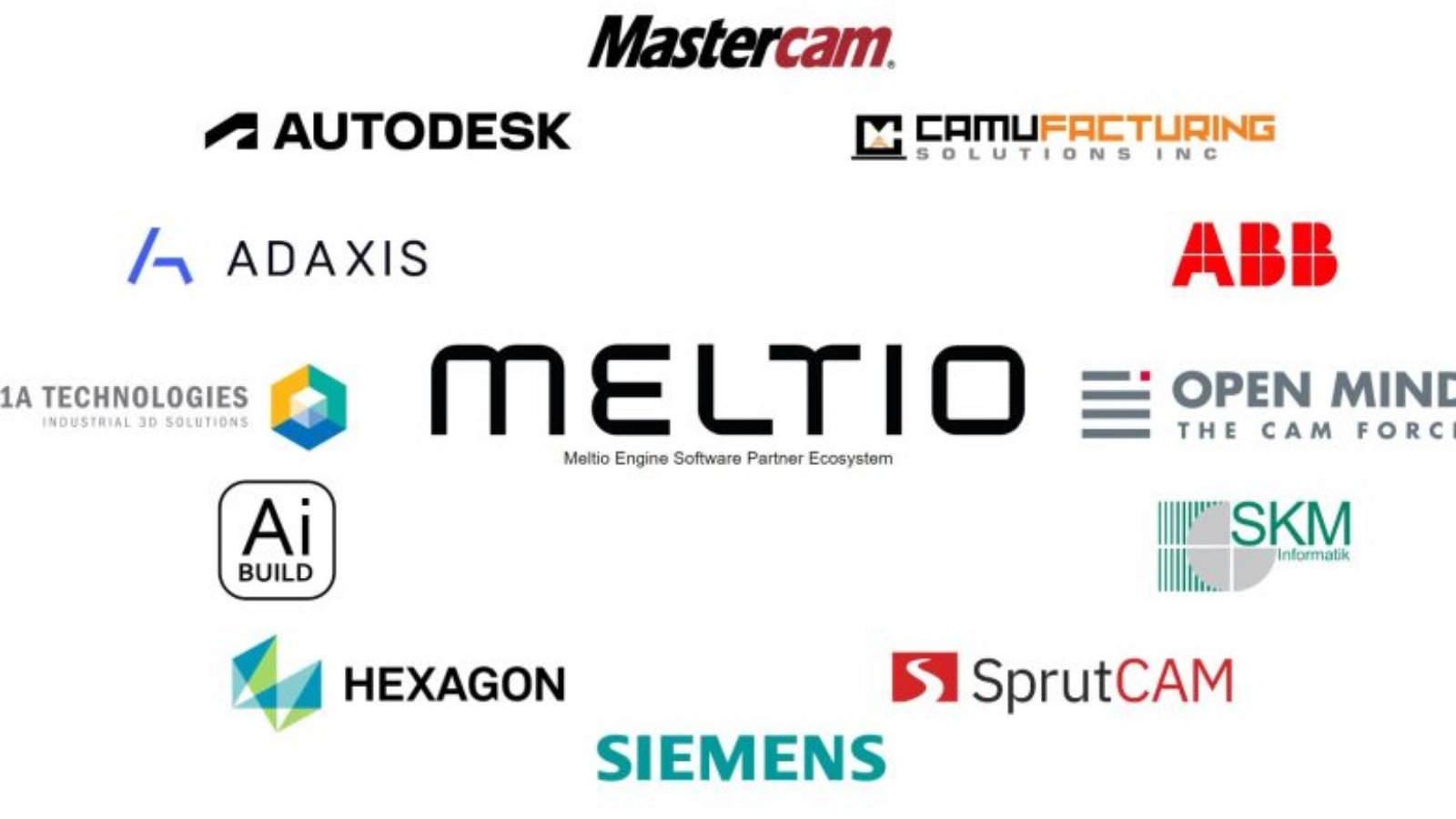Meltio has introduced its new Meltio Engine Software Partners ecosystem – to ensure a set of guaranteed and reliable software solutions for the customer to identify the best software solutions for Meltio’s Engine CNC Integration and Engine Robot Integration.
The 12 software companies that have joined Meltio Engine’s Software Partner ecosystem for hybrid and robotic platforms include SKM DCAM by SKM Informatik; AdaOne by Adaxis; AiSync by AiBuild; Esprit by Hexagon; Fusion 360 by Autodesk; Aplus+Mastercam by Camufacturing and Mastercam; Hypermill by OpenMind; SiemensNX by Siemens; Hy5CAM by 1ATechnologies; RobotStudio 3D Printing PowerPack by ABB; and SprutCAM X by SprutCam.
“For a year we have been working with all of them – sharing the needs that we understood most suitable for our customers, going as far as sharing as well as in some cases sharing the mathematical algorithms needed for the functionalities we required. The result of this collaboration between our engineers and the teams of these companies has now resulted in offering this software platform to the market,” said Ángel Llavero, CEO of Meltio.
Manufacturing on Demand
Meltio provides an open platform for hardware (any robot or CNC) as well as for software that allows the use of any software to manufacture metal parts and meet the growing demand of industrial applications in the market, with hybrid and robotic additive manufacturing processes.
This new software ecosystem offers tools to address a variety of applications and industries through advanced slicing features, such as fixed tool orientation, revolved surfaces, features on non-planar surfaces, simple surface coating, radial cladding, 360° features, variable layer deposition, controlled area repair, and non-controlled area repair.
With the addition of this software platform, Meltio takes another step forward in its commitment to improving the ease of use of its wire laser metal 3D printing technology. Meltio’s end-user value is reportedly based on offering freedom of choice and healthy competition in a new market.
You might also like:
Hexagon acquires digital twin creation company Loclab: LocLab’s in-house-developed toolchain can leverage several data input formats to balance speed, cost, and accuracy – such as terrestrial videogrammetry, survey data, and point clouds – but only requires photographs or videos. Videogrammetry is a highly scalable method used when survey accuracy is not needed, and speed is preferred. Whether creating 3D models of machines, buildings and manufacturing facilities, or large-scale areas such as transportation networks or entire cities, the AI software compares detected objects with LocLab’s vast object library of 3D elements (street objects, building components, rail equipment, etc) to semi-automate the creation of a semantically-enriched 3D model (adding context and descriptive elements).
* This article is reprinted from 3D Printing Media Network. If you are involved in infringement, please contact us to delete it.
Author: Edward Wakefield



Leave A Comment